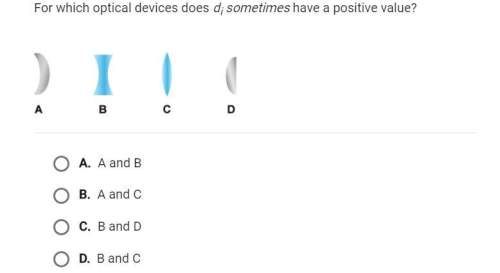
Physics, 23.07.2021 03:00 Darkknighta26
Light takes 1.2 sec to get from the moon to the Earth. Assume you are looking at the moon with noticeable earth shine. If the Sun burned out, you would eventually see the crescent of the moon disappear. The earth shine part of the moon would disappear Answer 2.4 s after the crescent disappeared.

Answers: 3


Another question on Physics

Physics, 22.06.2019 06:00
Which of the following changes will result in a stronger electromagnet? a. using fewer coils of wire b. using a higher voltage c. using a shorter nail d. using a longer wire
Answers: 1

Physics, 22.06.2019 11:10
Which situation will produce the greatest change of momentum
Answers: 2

Physics, 22.06.2019 11:20
The ultracentrifuge is an important tool for separating and analyzing proteins. because of the enormous centripetal accelerations, the centrifuge must be carefully balanced, with each sample matched by a sample of identical mass on the opposite side. any difference in the masses of opposing samples creates a net force on the shaft of the rotor, potentially leading to a catastrophic failure of the apparatus. suppose a scientist makes a slight error in sample preparation and one sample has a mass 10 mg larger than the opposing sample. if the samples are 12 cm from the axis of the rotor and the ultracentrifuge spins at 70,000 rpm, what is the magnitude of the net force on the rotor due to the unbalanced samples? ( be thorough on your answer)
Answers: 3

Physics, 22.06.2019 13:00
Nacidified solution was electrolyzed using copper electrodes. a constant current of 1.18 a caused the anode to lose 0.584 g after 1.52 ✕ 103 s. given that the charge of an electron is 1.6022 ✕ 10−19 c, calculate avogadro's number. assume that copper is oxidized to cu2+ ions.
Answers: 1
You know the right answer?
Light takes 1.2 sec to get from the moon to the Earth. Assume you are looking at the moon with notic...
Questions




World Languages, 12.08.2020 07:01








Physics, 12.08.2020 07:01








World Languages, 12.08.2020 07:01




